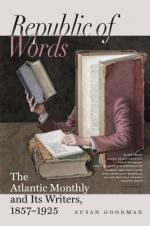The technicalities of Art, its refinements of style, its absolute significance, are, indeed, as dependent for appreciation on a special endowment as are mathematics; but the general and incidental associations, in which is involved a world of poetry, may be enjoyed to the full extent by those whose perception of form, sense of color, and knowledge of the principles of sculpture, painting, music, and architecture are notably deficient. It is a law of life and nature, that truth and beauty, adequately represented, create and diffuse a limitless element of wisdom and pleasure. Such memorials are talismanic, and their influence is felt in all the higher and more permanent spheres of thought and emotion; they are the gracious landmarks that guide humanity above the commonplace and the material, along the “line of infinite desires.” Art, in its broad and permanent meaning, is a language,—the language of sentiment, of character, of national impulse, of individual genius; and for this reason it bears a lesson, a charm, or a sanction to all,—even those least versed in its rules and least alive to its special triumphs. Sir Walter Scott was no amateur, yet, through his reverence for ancestry and his local attachments, portraiture and architecture had for him a romantic interest. Sydney Smith was impatient of galleries when he could talk with men and women, and made a practical joke of buying pictures; yet Newton and Leslie elicited his best humor. Talfourd cared little and knew less of the treasures of the Louvre, but lingered there because it had been his friend Hazlitt’s Elysium. Indeed, there are constantly blended associations in the history of English authors and artists; Reynolds is identified with Johnson and Goldsmith, Smibert with Berkeley, Barry with Burke, Constable and Wilkie with Sir George Beaumont, Haydon with Wordsworth, and Leslie with Irving; the painters depict their friends of the pen, the latter celebrate in verse or prose the artist’s triumphs, and both intermingle thought and sympathy;




